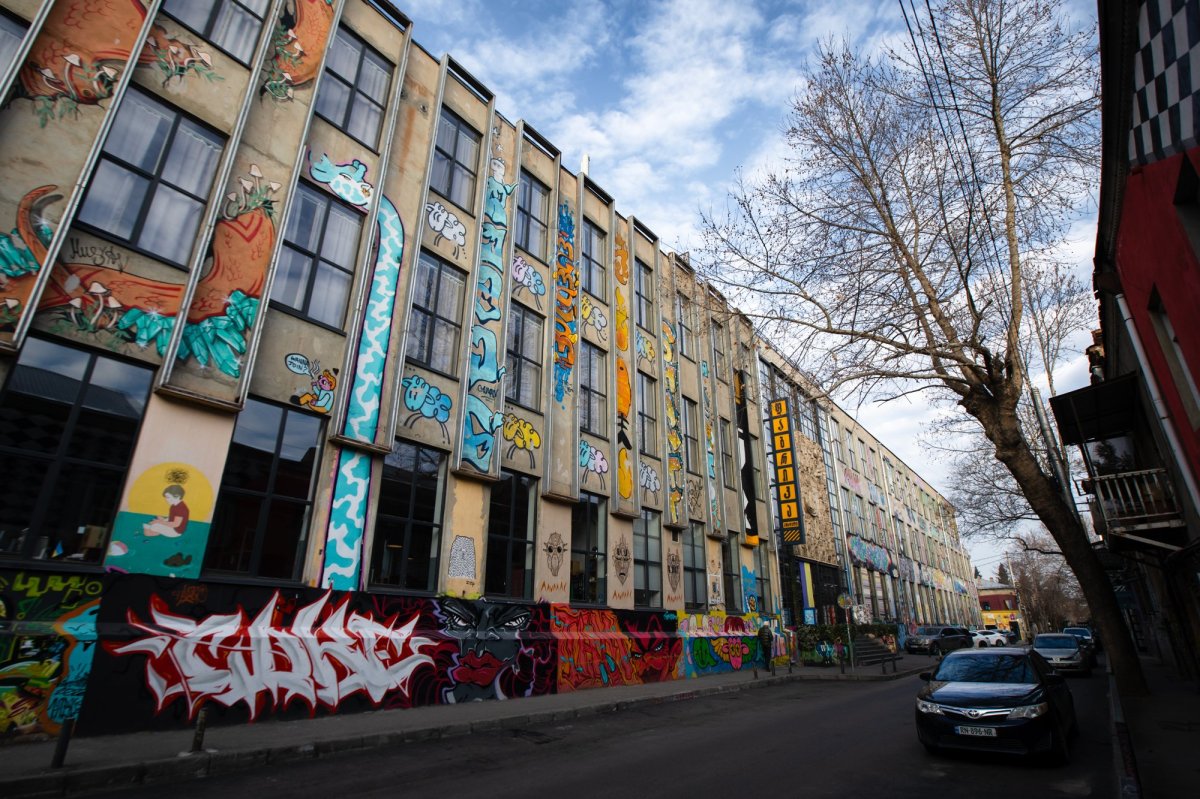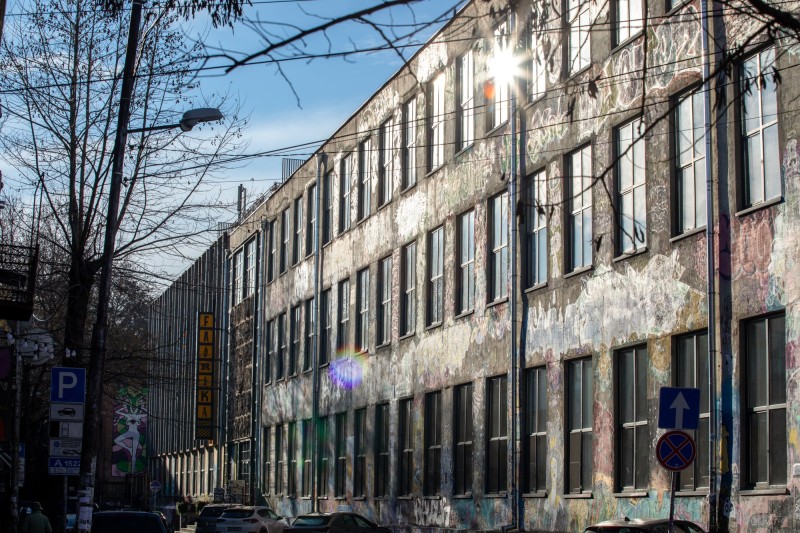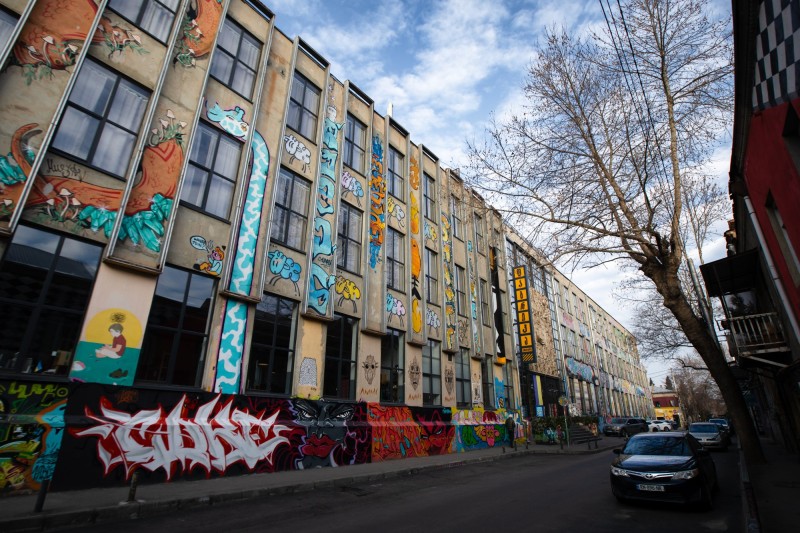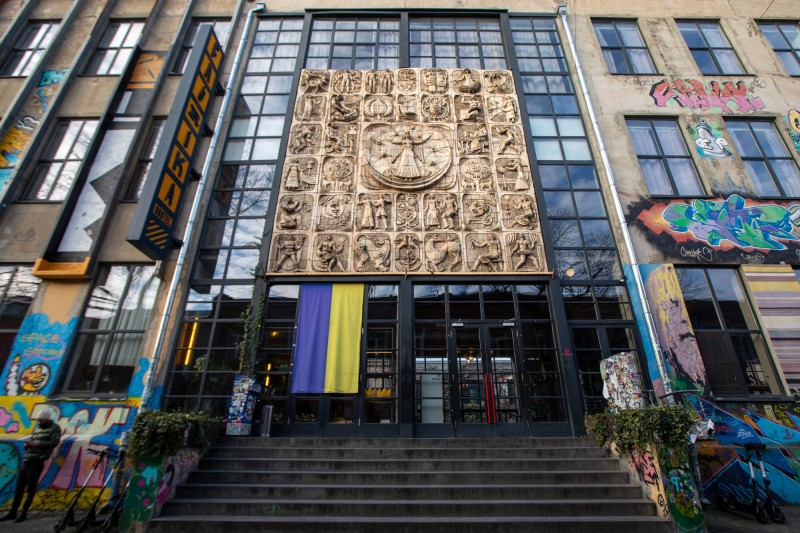
Information in details
8, Ninoshvili St.- The appearance of industrial buildings is an important stage in the history of any country, an indicator of the development of its economy and technology, which had a great impact on the architecture of the 20th century in general. Obviously, the construction of industrial buildings was of great importance for Tbilisi as well; Along with it, the characteristic features of industrial architecture entered the architectural narrative of the city: the geometry and functionality of the forms, the simplicity of the architectural planes and the large scale. The former garment factory is one of the interesting examples of industrial architecture of the first half of the 20th century in Tbilisi. The massive, monolithic, cubic volume of the building standing on the corner of E. Ninoshvili and K.Abashidze Streets, which occupies almost the entire quarter, is perceived at first glance. The simple, geometric shapes and clear planning of the building emphasize the calmness of the facades. Divided by the frequent rhythm of window openings, the main facade elongated along the red line of the street is the only decorative accent created by the monumental relief placed above the entrance. The symbolic relief created on the general motifs of Georgian culture is a late, 1980s addition to the building - which brings the late Soviet aesthetics into the artistic-architectural appearance of the early 20th-century industrial building.
As a result of rehabilitation and reconstruction, the defunct former industrial building has turned into a multifunctional space gathered around a large rectangular inner courtyard, where cafes-bars, workshop-shops, hostels, and artistic and common workspaces create an exceptionally attractive atmosphere inspiring socialization, new relationships and collaborations.
"The earliest part of the two-story brick building located at 148, D. Agmashenebeli Ave. dates back to the 60s of the 19th century. It was a cadet school, which was opened in January 1866 as a temporary cadet school. In 1919, on the initiative of General Giorgi Kvinitadze, the cadet school was turned into a military school. The main architectural feature of the symmetrical facade of the eclectic style is a small portal protruding in front, in which the main entrance is cut. The rusty wall, the pilasters, and the decorative decor of the triangular pediment are made of brick piles. The third floor, slightly deeper than the outer contour of the building, covered with plaster, was built a little later, in the first half of the 20th century. Despite the different textures, by synchronizing the facade decoration, a certain integrity has been achieved in the artistic face of the building."
At 138, D. Agmashenebeli Ave., a brick-built residential house with a Latin L-shaped plan faces Davit Agmashenebeli Avenue with the main facade. The building of the end of the 19th century and the beginning of the 20th century is characterized by eclectic aesthetics. The central section of the neoclassical-style facade is occupied by balconies "sunk" in the plane of the second and third-floor walls. It is worth noting that the balcony with wooden columns and water-ornamental decorative arches had a metal railing, which is a rather rare solution. In addition, its curvilinear ornamentation stylistically indicates the influence of modern Art Nouveau, as well as the only sculptural representation of a male head that has come down to us. The bearded man's painted face and facial expressions are the bearers of Art Nouveau aesthetics. As a result of the rehabilitation in the 2010s, the building returned to its original appearance according to old photographs. Like the old Tbilisi tradition, the house has an inner courtyard with wooden balconies.


 თბილისი, Ninoshvili's street N8
თბილისი, Ninoshvili's street N8
 41.7092694, 44.8029795
41.7092694, 44.8029795





